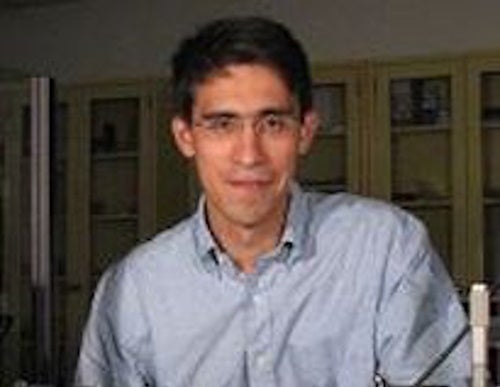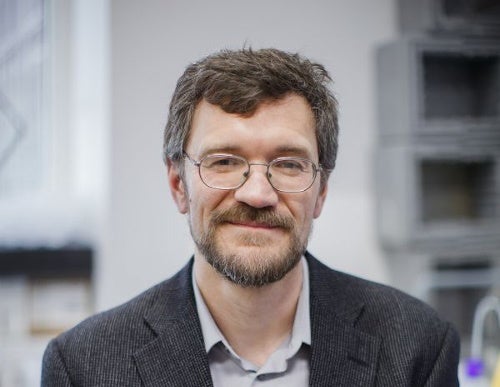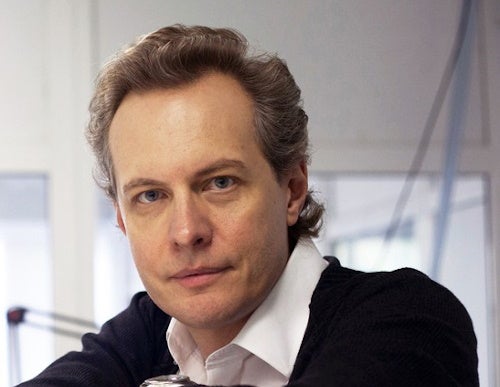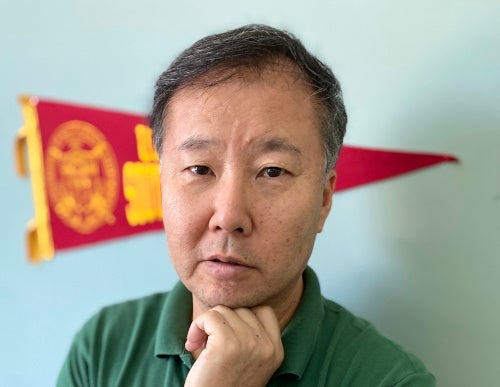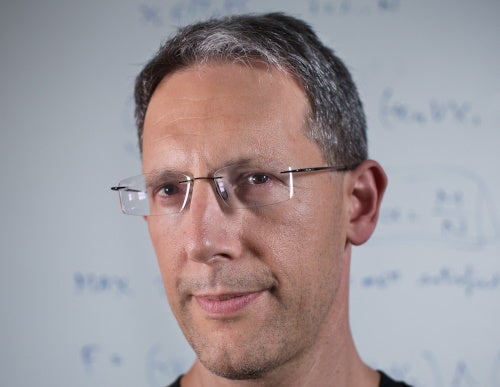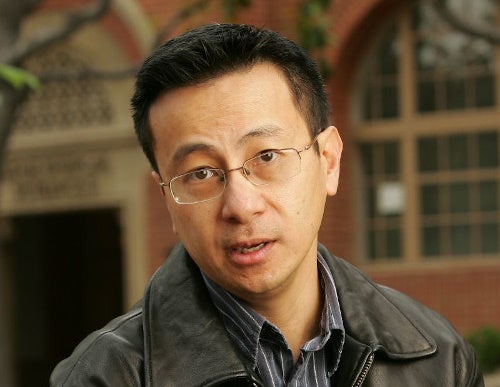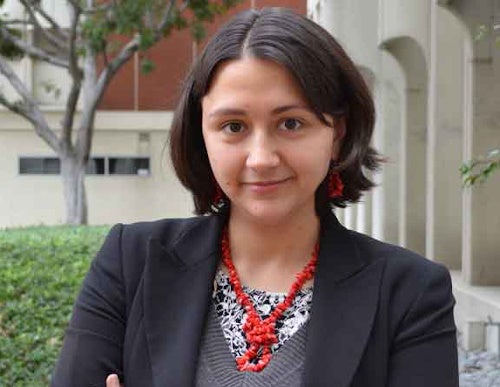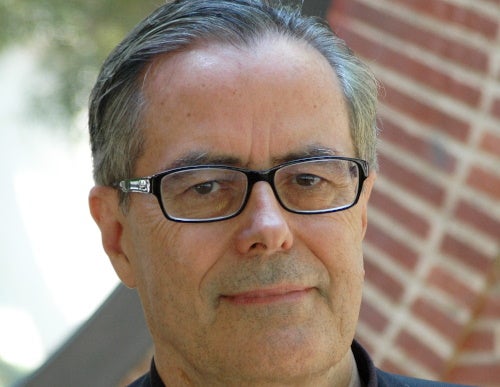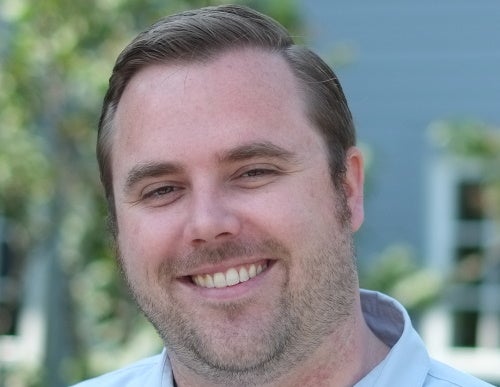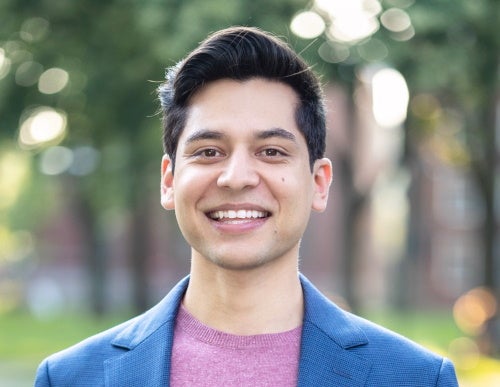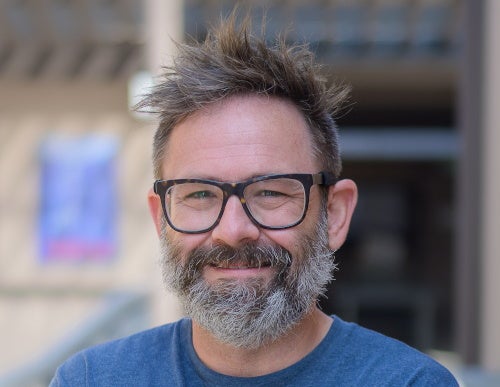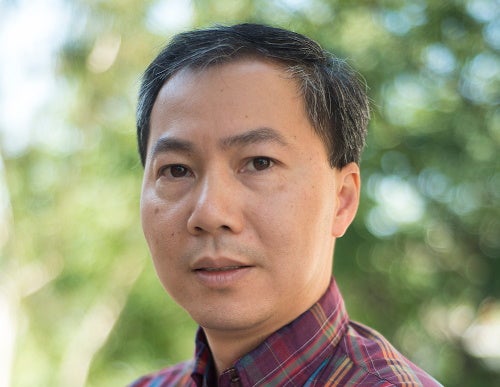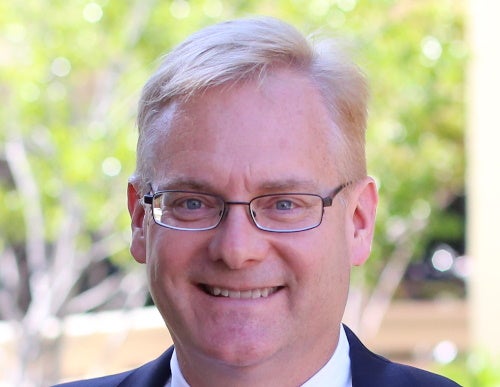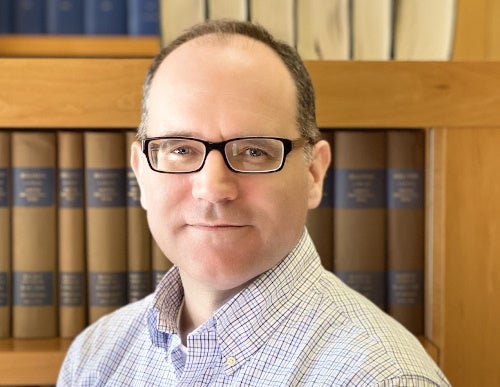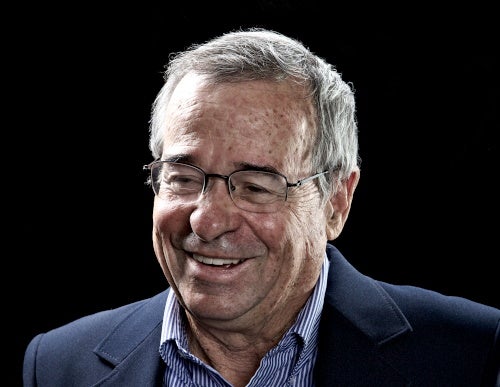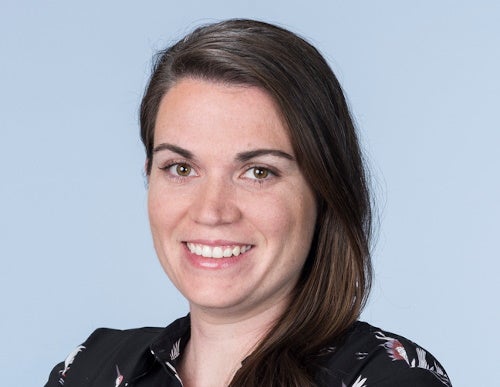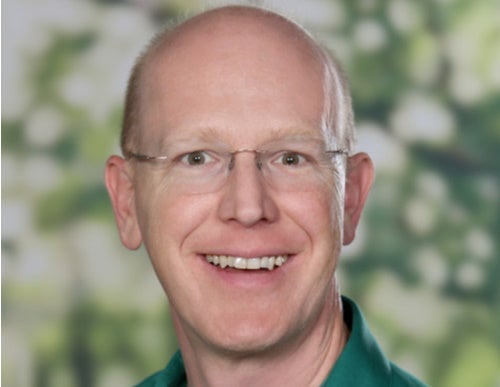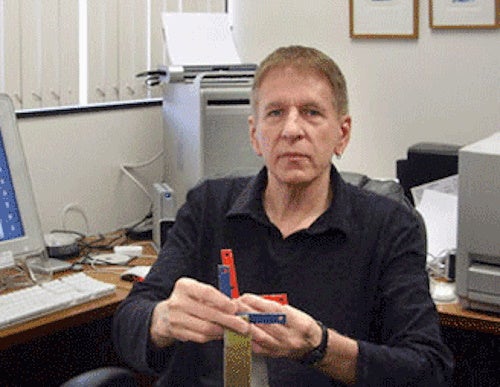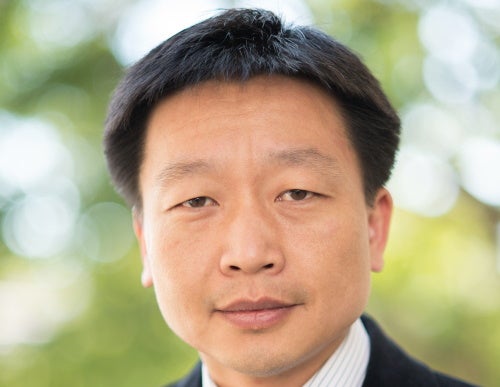Alexander V. Benderskii
Associate Professor of Chemistry
Physical
Our group’s research focuses on the molecular structure and dynamics of surfaces and condensed phase interfaces.
Stephen E. Bradforth
Professor of Chemistry
Physical
Our group designs laser-based experiments to gain a deeper understanding of how the inter-connected motions of molecules impact chemical reactions in complex environments such as the aqueous milieu of cells, molecular liquids, or in functional molecular materials.
Richard L. Brutchey
Professor of Chemistry
Inorganic
Researchers in the Brutchey group focus on developing new methods of inorganic material synthesis to address challenges related to catalysis, energy storage and conversion, and sustainability.
Vadim Cherezov
Professor of Chemistry
Chemical Biology
Physical
Our group is focused on deciphering functional mechanisms of membrane proteins in health and disease, using cutting edge structural, biophysical and biochemical approaches.
Jahan M. Dawlaty
Professor of Chemistry
Physical
We use spectroscopic tools to answer fundamental questions at the intersection of catalysis, electrochemistry, and materials sciences, with special focus on challenges in energy conversion and storage.
Megan Fieser
Gabilan Assistant Professor of Chemistry
Inorganic
Organic
Researchers in the Fieser group are interested in the design of molecular catalysts for the polymerization of degradable polymers and/or the depolymerization of commercial, non-degradable polymers.
Valery Fokin
Professor of Chemistry
Chemical Biology
Organic
We are involved in the broader area of organic synthesis with applications in chemical biology.
Michael S. Inkpen
Assistant Professor of Chemistry
Inorganic
We design and study single-molecule devices and self-assembled monolayers, applying electrochemical and scanning probe microscope-based methods to address fundamental questions in energy storage, catalysis, and electron transfer/transport.
Kyung W. Jung
Associate Professor of Chemistry
Organic
We use organic synthesis and catalysis to explore research areas including RNA-targeting drug discovery and C-H bond activation of methane.
Anna Krylov
USC Associates Chair in Natural Sciences and Professor of Chemistry
Chemical Biology
Physical
Theoretical
The Krylov group develops theoretical methods and state-of-the-art computer codes for treating electronically excited and open-shell species. We apply these tools to study bioimaging, plasma, solar energy, quantum information science, and spectroscopy modeling, often in collaboration with experimentalists.
Daniel A. Lidar
Viterbi Professorship in Engineering and Professor of Electrical and Computer Engineering, Chemistry, and Physics and Astronomy
Physical
Theoretical
We are interested in fundamental and applied questions in quantum information science. Our group explores topics including adiabatic quantum computation and quantum annealing, theory and control of open quantum systems, quantum error correction, quantum algorithms, and physical implementations of quantum computers.
Chi H. Mak
Professor of Chemistry
Chemical Biology
Physical
Theoretical
Our group is focused on formulating rigorous theories and efficient computational strategies to understand the fundamental driving forces that dictate how nucleic acids fold and unfold, and the aberrant functions that result when they misfold.
Smaranda C. Marinescu
Associate Professor of Chemistry
Inorganic
We are interested in the development of novel catalytic systems for efficient solar-to-fuel technologies. Inspired by biological systems, we design molecular catalysts that involve hydrogen bonding networks capable of small molecule activation through multiple proton and electron transfers.
Charles E. McKenna
Professor of Chemistry
Chemical Biology
Organic
We are a drug discovery and medicinal chemistry lab using organic synthesis, computer-assisted design modeling, and a network of more than 20 biological collaborators to devise and develop molecules for the treatment of viral, bacterial and fungal infections, as well as cancer. Another area of interest is the creation of novel imaging agents targeting bone diseases.
Brent C. Melot
Professor of Chemistry
Inorganic
The Melot group works on all aspects of materials design, meaning that we synthesize new compounds, study their atomic structure, and characterize their functional properties. Current topics include photovoltaics, intercalation electrodes for Li-, Na-, or F-ion batteries, and heterogeneous catalysts for sustainable chemistry.
Elias Picazo
Assistant Professor of Chemistry
Organic
The Picazo group is interested in transition metal catalysis, selective catalysis, and synthesis. With a special focus on base metal catalysts, we aim to solve long-standing challenges in synthesis. Lastly, we aim to use the newly developed reactions to synthesize molecules of interest.
G. K. Surya Prakash
Distinguished Professor of Chemistry and Chemical Engineering and Materials Science – George A. and Judith A. Olah Nobel Laureate Chair in Hydrocarbon Chemistry
Organic
Our research centers on hydrocarbon, synthetic organic, organosilicon and organofluorine chemistry with special emphasis in areas of energy, catalysis, and greenhouse gas abatement. We are particularly focused on carbon dioxide capture from air and sustainable carbon recycling through a concept called the methanol economy.
Matthew R. Pratt
Professor of Chemistry
Chemical Biology
Organic
We are interested in the biological consequences of protein posttranslational modifications, with a focus on glycosylation. We utilize a combination of organic synthesis, bioorthogonal reactions, and synthetic protein chemistry to accomplish these goals.
Oleg V. Prezhdo
Professor of Chemistry
Physical
Theoretical
We study excited state processes in a broad range of materials and molecules for energy and opto-electronics applications. For this purpose, we develop nonadiabatic molecular dynamics and time-dependent density functional theory.
Peter Z. Qin
Professor of Chemistry
Physical
Chemical Biology
We are interested in understanding the mechanisms of specific recognition of nucleic acids that inform genome engineering as well as developments in diagnostics and therapeutics. We use Site-Directed Spin Labeling (SDSL) and other tools to study the relationship between structure, dynamics, and function in nucleic acids and protein-nucleic acid complexes.
Hanna Reisler
University Professor, Lloyd Armstrong, Jr. Chair for Science and Engineering and Professor of Chemistry
Physical
We study detailed mechanisms of photoinitiated chemical reactions in gas and condensed phases. Our goal is to understand reactive processes at a fundamental level, in particular those important in the atmosphere.
Richard W. Roberts
Professor of Chemistry, Chemical Engineering and Materials Science
Chemical Biology
Organic
Physical
Our research involves engineering new peptides and proteins for biology, diagnosis, and therapy using mRNA display.
Susumu Takahashi
Associate Professor of Chemistry
Physical
We are interested in developing novel magnetic resonance techniques for tests of fundamental science in quantum physics, investigations of nanoscale magnetism/spin dynamics, and applications to biological imaging and sensing.
Barry C. Thompson
Professor of Chemistry
Organic
We use organic synthesis and develop new polymerization methods and polymer architectures to address sustainability and materials for alternative energy applications.
Mark E. Thompson
University Professor, Ray R. Irani Chairman of Occidental Petroleum Corporation Chair in Chemistry and Professor of Chemistry – Fellow of the National Academy of Engineering
Inorganic
Physical
We are interested in the optical and electronic properties of molecular materials, with an eye toward materials used to create organic LEDs, solar cells, and catalysts for solar fuels.
Andrey Vilesov
Professor of Chemistry
Physical
We specialize in the spectroscopy of molecules and molecular ions isolated in superfluid helium droplets and the study of quantum fluids on an atomic scale.
Arieh Warshel
Distinguished Professor of Chemistry – Fellow of the National Academy of Sciences – Nobel Laureate in Chemistry
Chemical Biology
Physical
Theoretical
We develop and use advance computer simulations to elucidate the functions of key biological molecules, with an overarching goal to help alleviate human suffering. Our methods help to elucidate how chemical reactions are catalyzed by enzyme and to progress in enzyme design. We also use our simulations to study the action of very large biological molecules, including molecular motors, ion channels and systems that control signal transduction in the cell. Additionally, we focus a significant effort on computer aided drug design and on fighting drug resistance.
Kate L. White
Gabilan Assistant Professor of Chemistry
Chemical Biology
Our research aims to help bridge the gap between structural biology and physiology by pioneering new experimental and computational tools for multi-scale structural biology (atomic to cellular scales). A major focus is the multi-scale structure and function of pancreatic β-cells and the chemical environment of insulin vesicles. Our approach to cell mapping utilizes a combination of multi-modal imaging, biophysical approaches, and integrative modeling (metamodeling) to relate multi-scale structure to cell function.
Travis J. Williams
Professor of Chemistry
Inorganic
Organic
We are interested in studies of organometallics and catalysis and are applying them in projects ranging from designing new catalytic systems for synthetic fuels and fine chemicals to reclaiming value from waste polymers and materials.
Curt Wittig
Paul A. Miller Professor of Letters, Arts and Sciences
Physical
Our group’s research addresses fundamental issues germane to a number of interesting and relevant gaseous and condensed phase (liquid and solid) environments.
Chao Zhang
Associate Professor of Chemistry
Chemical Biology
Organic
Research in the Zhang group focuses on the discovery and mechanistic study of novel small-molecule modulators of diverse proteins using a combination of techniques including structure-based design, organic synthesis, and chemical proteomics.
